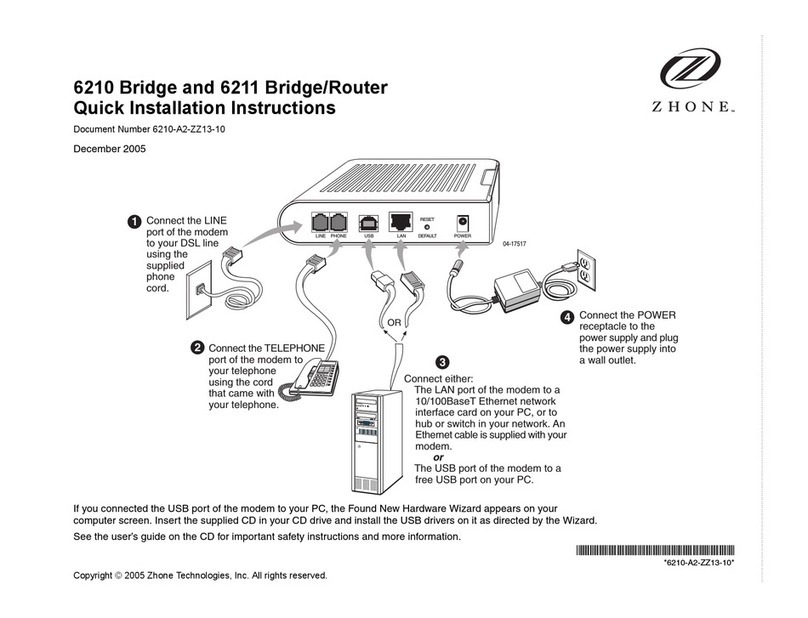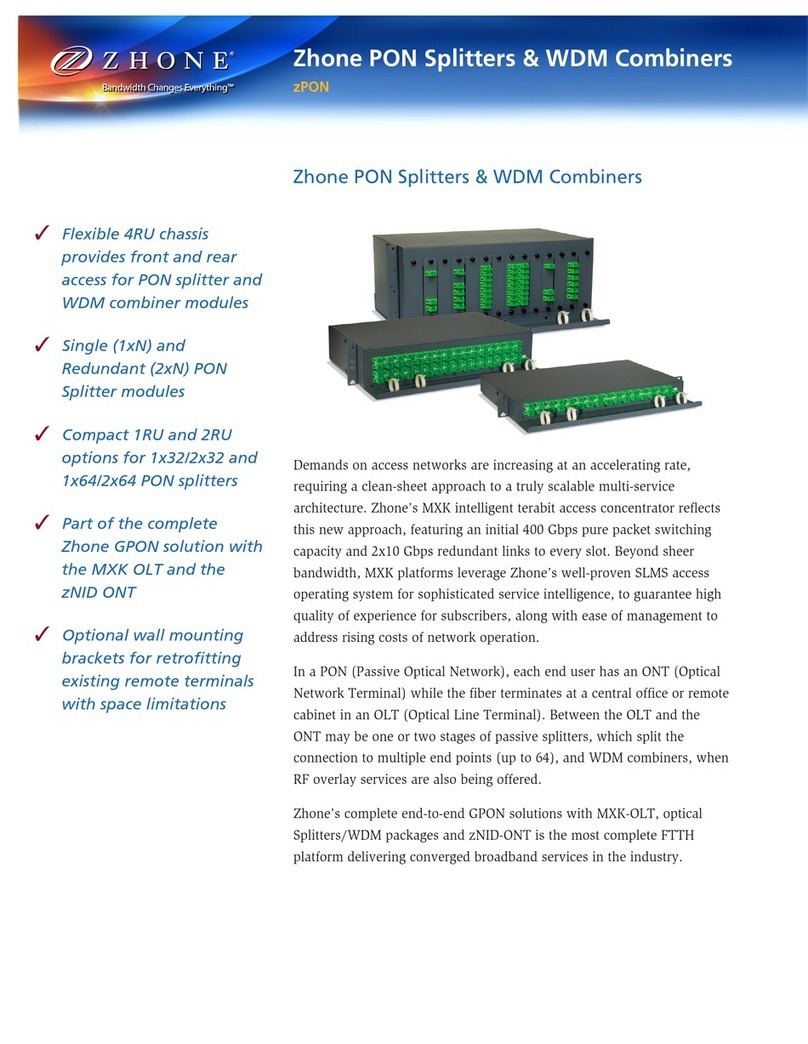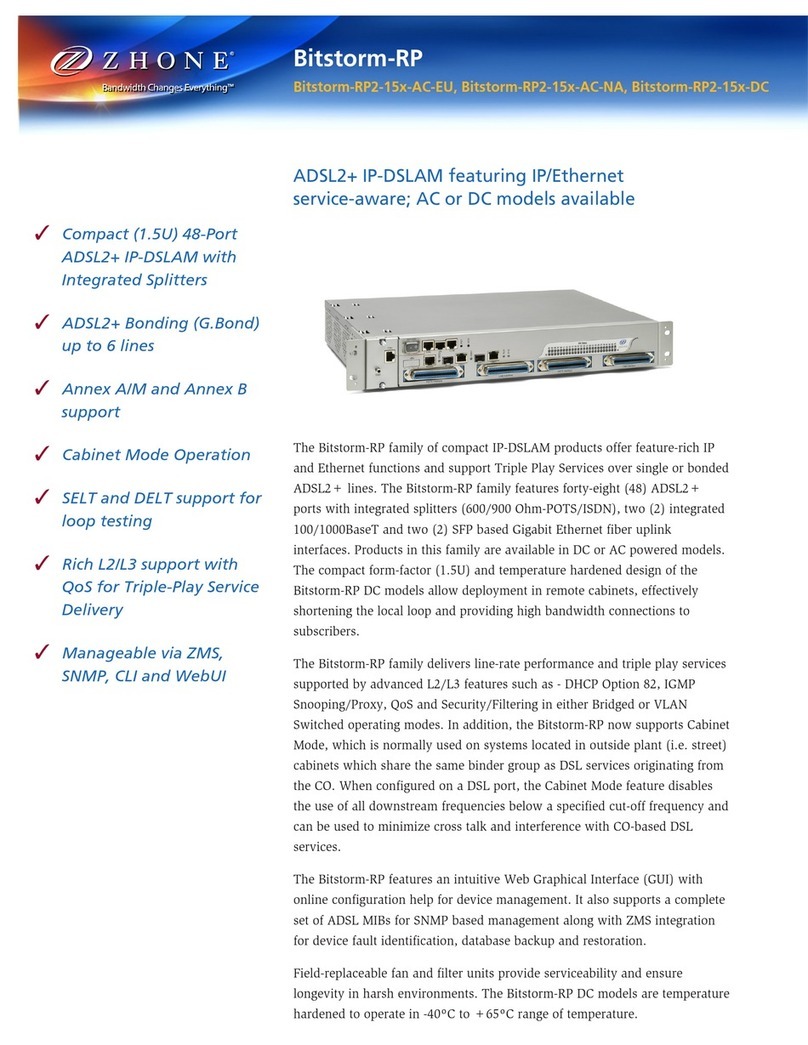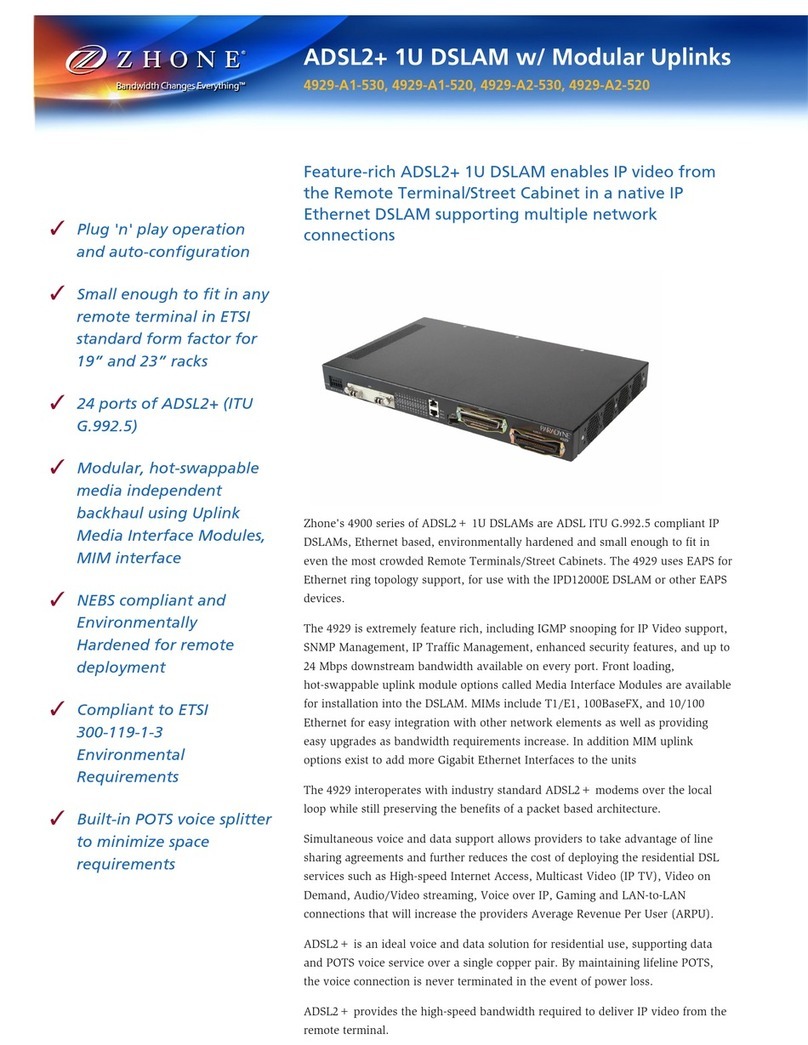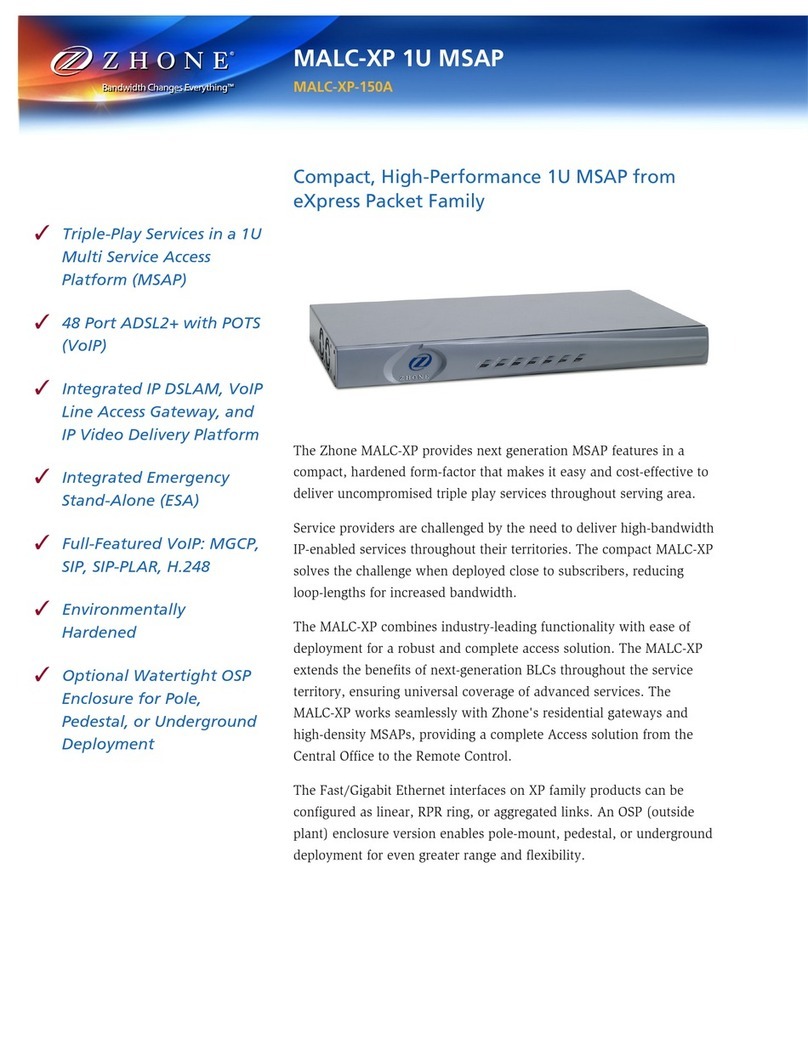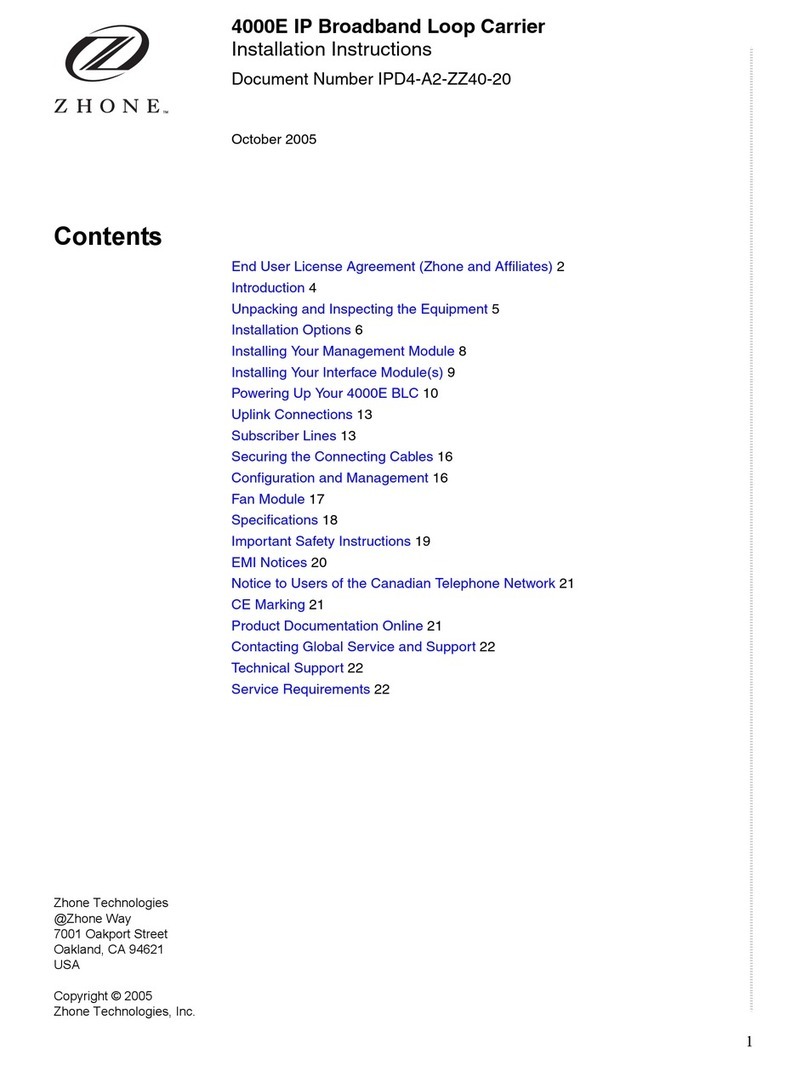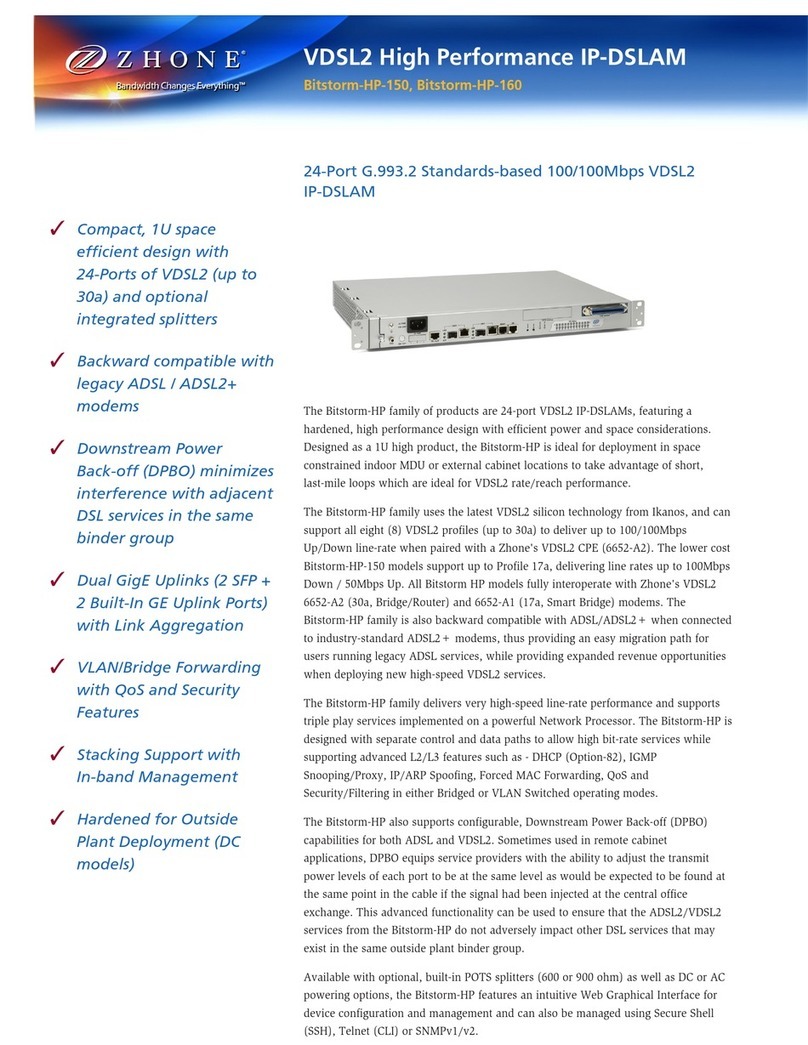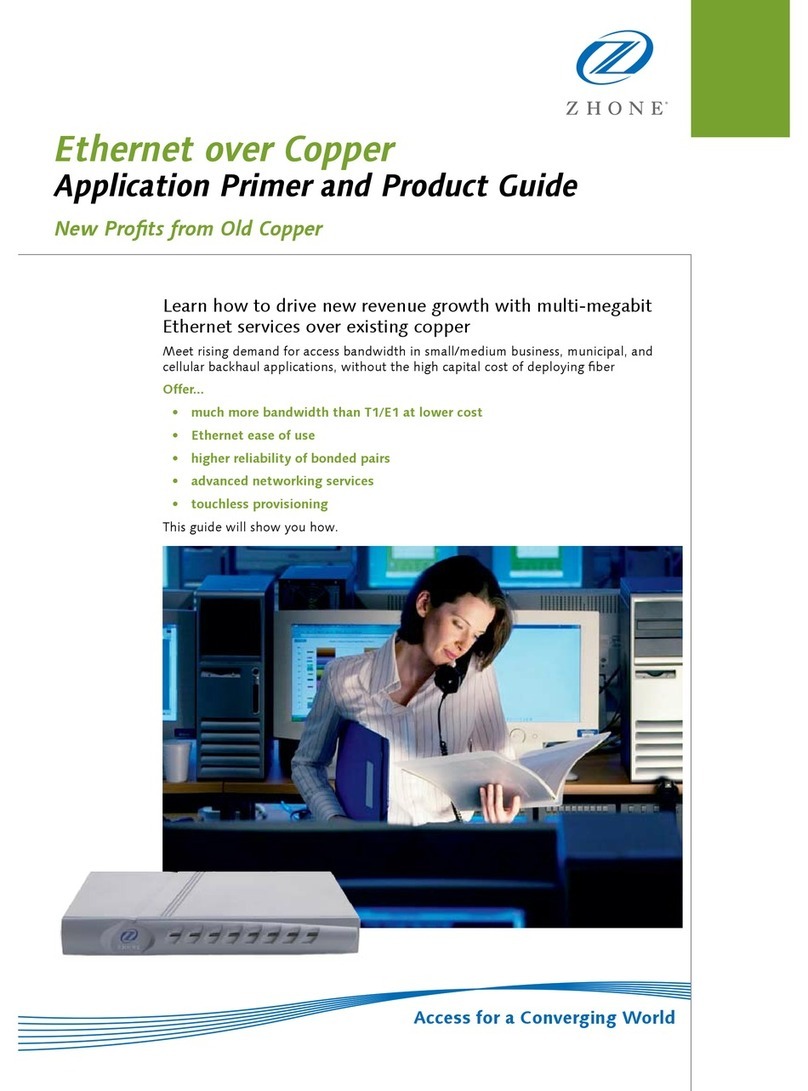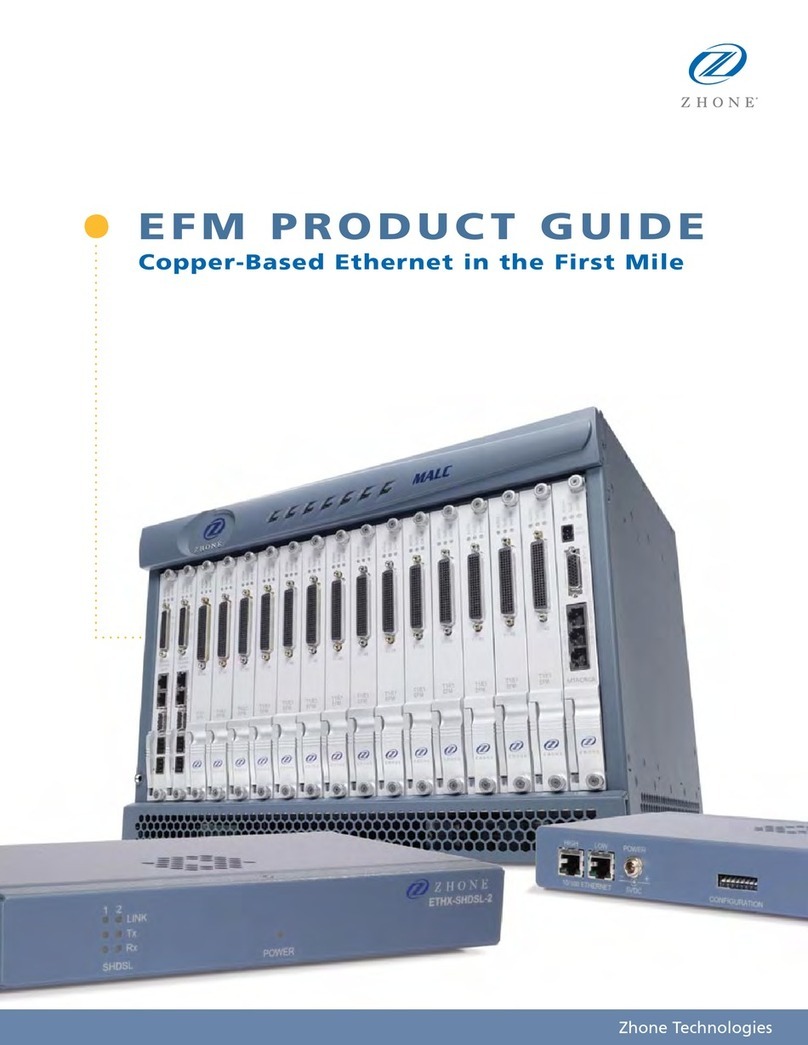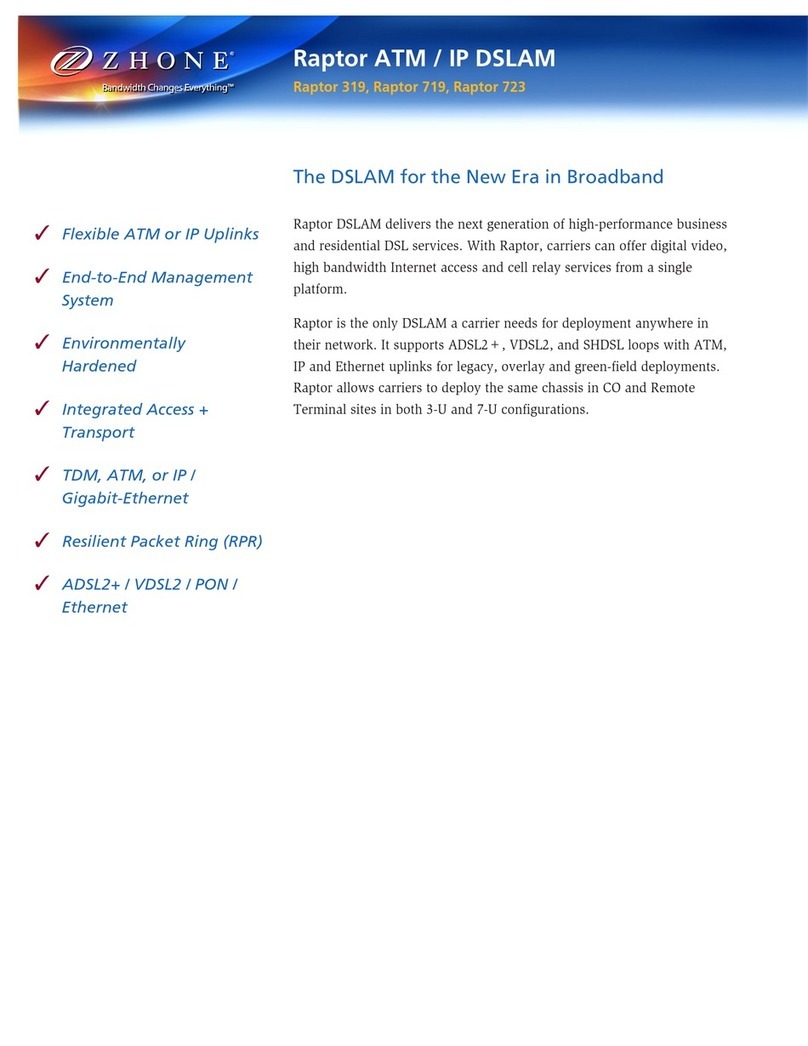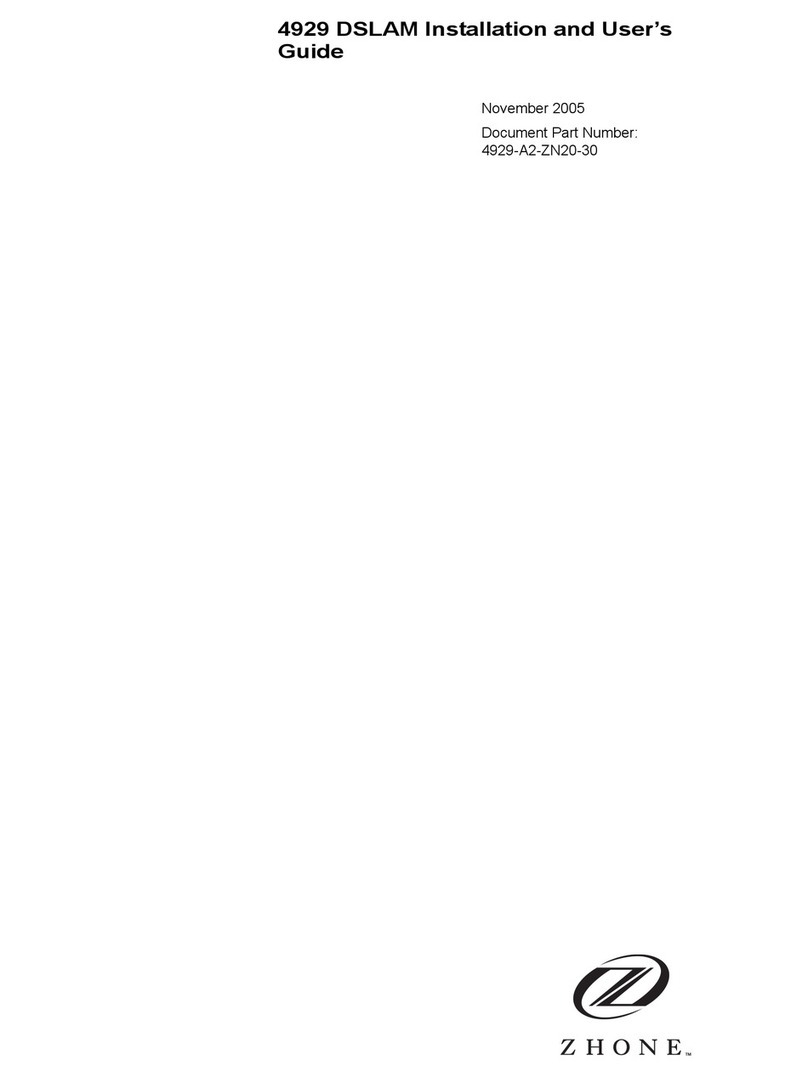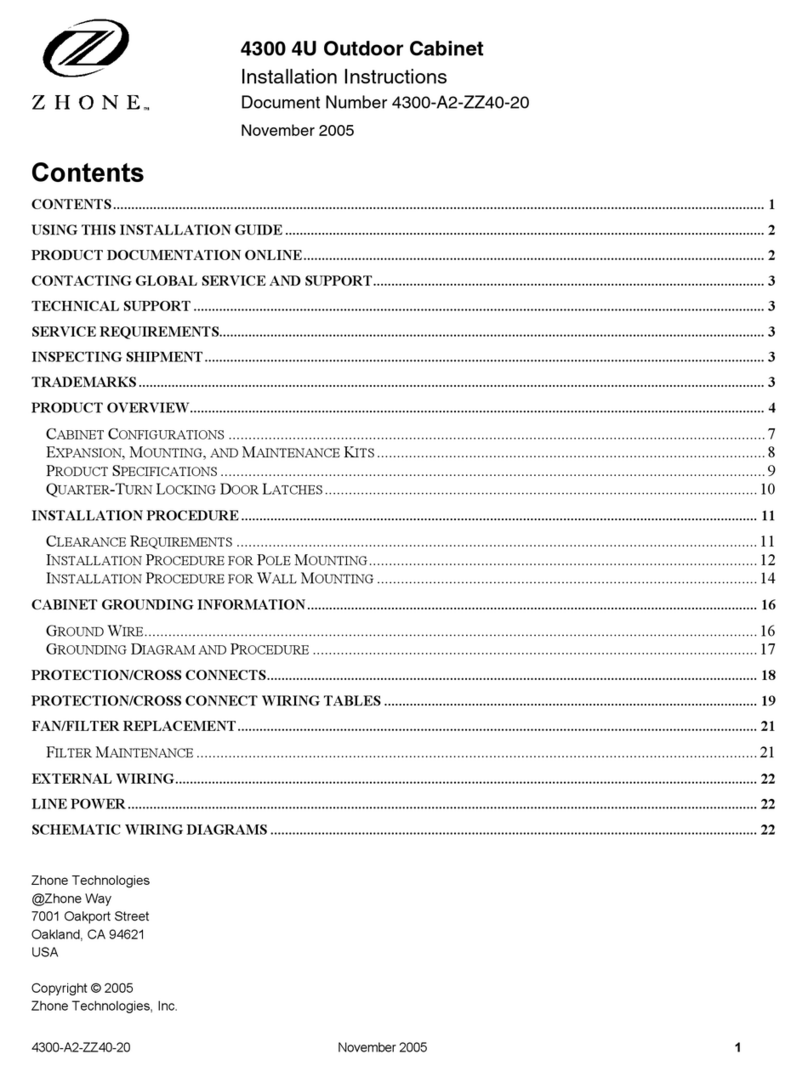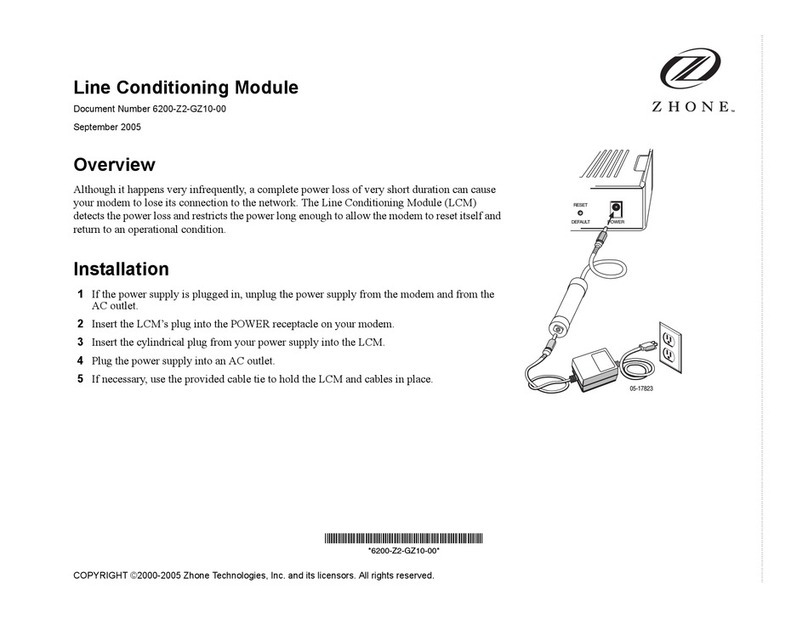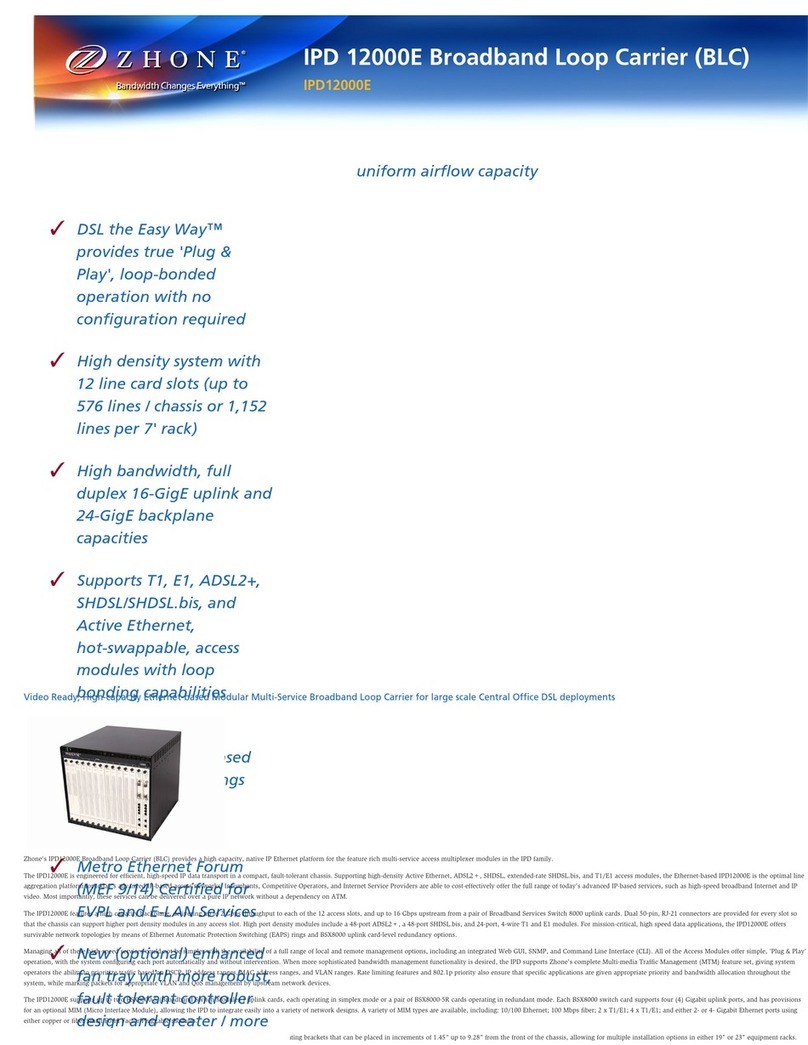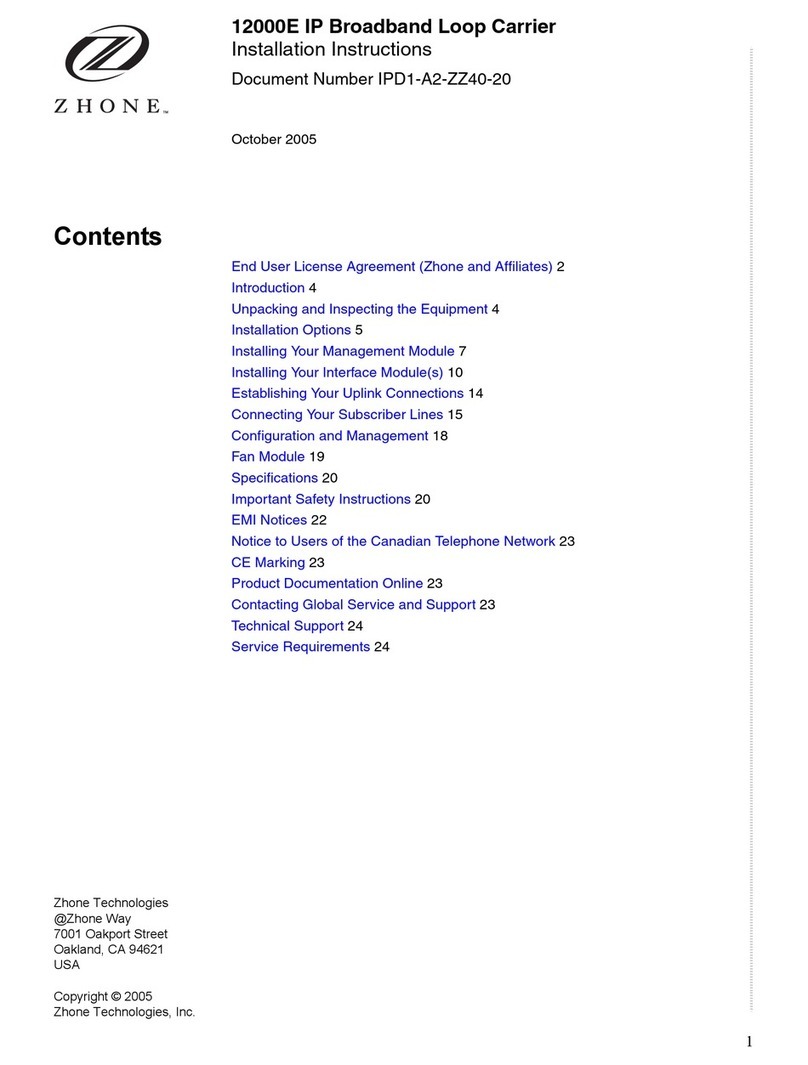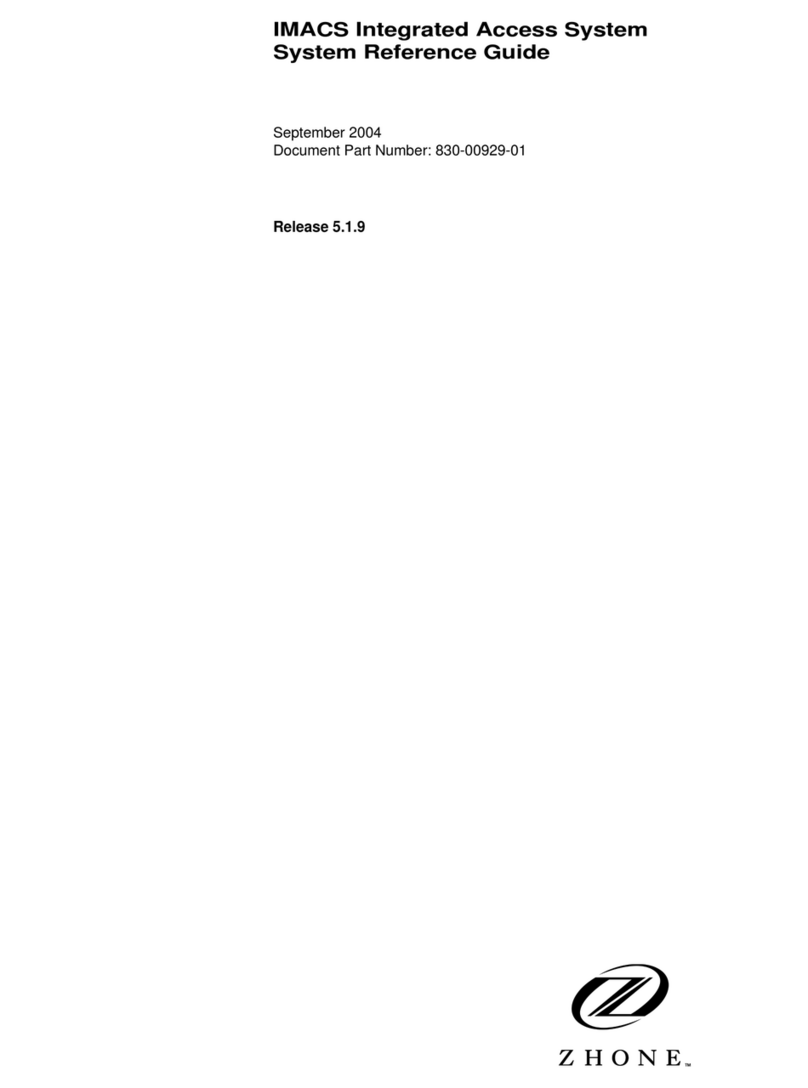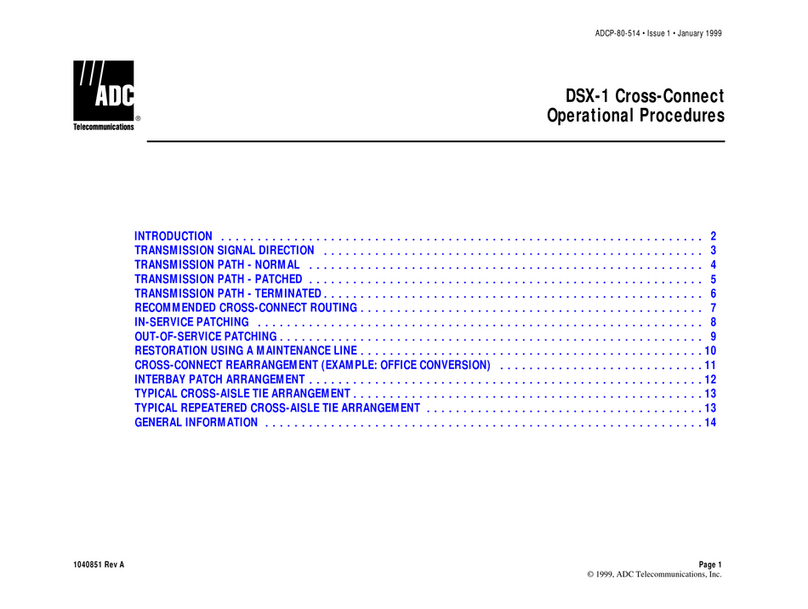
Zhone Technologies, Inc. IMACS Product Book, Version 4
March 2001 Page 6
Voice Card
The IMACS supports a wide-variety of cards to support voice channel bank applications. Typically they are a
family of cards each of which provides 8 ports, which translate the analog signal to PCM and translate the signaling
information from the analog interface for transmission over a digital facility. The interfaces supported include FXS,
FXO, E&M, FXS Coin, FXO Coin and P-phone.
Data Card
The IMACS supports multiple types of data cards for transport of Digital Data in 2, 4, 8 or 10 port models. They
include High-speed synchronous V.35, EIA530, RS449, RS422, V.1 data, low speed RS232, V.24 data, DDS traffic
(Digital Data via an OCU-DP or DSO-DP) and ISDN-BRI traffic.
Server Card
The Server cards provide voice and data processing functions for WAN voice and User cards. The Server card
typically provides a centralized processing function on traffic initially entering the system from User or WAN
connections. The function is implemented, as a Server card when processing is needed on the data, following the
termination of the physical interface layer. One example is protocol processing, where information needs to be
extracted from a bit oriented protocol entering from one port, is processed, and sent out another port. The hardware
function of the protocol processing is separated from the hardware required to support the physical interfaces.
Traffic may arrive from time slots over a WAN link, or via an FXS card. An example is the ADPCM voice
compression server card. The compressed voice data can be extracted from selected time slots of T1/E1 WAN links,
and then expanded by ADPCM Server module. This can be accomplished without each WAN card having the
hardware required to compress all its channels. Server cards can also be used to perform a high-speed trunking and
aggregation function for the shelf. In these applications a Server card may have a high-speed cable or optical
interface. An example of a high-speed aggregation function on a Server card is the ATM Server card, which has a
high-speed DS3 interface. Other examples are the Frame Relay module for Frame Relay concentration, ISDN-PRI,
Inverse-muxing, or Low Bit Rate Voice (LBRV).
Redundancy and Load Sharing
IMACS supports load sharing and redundancy of the following critical system modules:
• System Power Supply Unit
• CPU Card
• WAN Card
• ADPCM Voice Compression Card
Power Supply Redundancy
The IMACS Power Supply Units can support load sharing power redundancy and require the installation of two
identical power supplies in the unit. The status of the power supplies is reported via LEDs that are visible through
the front panel. Both IMACS power supplies load share in supplying all the power signals on a shelf. This includes
120/240 VAC, 24 VDC and -48VDC (when equipped). The IMACS power supplies are fully equipped with “ORing
Diodes” on all power rails. Therefore, insertion and removal of power supplies are non-intrusive to system
operation. Depending on system configuration, a single power supply can fully support the system. The main
IMACS CPUs are also equipped with power supply monitoring functions. This capability enables the CPU boards
to monitor the instantaneous levels of all voltages in the system. This provides immediate alarming of failed power
supplies by the active CPU card.
